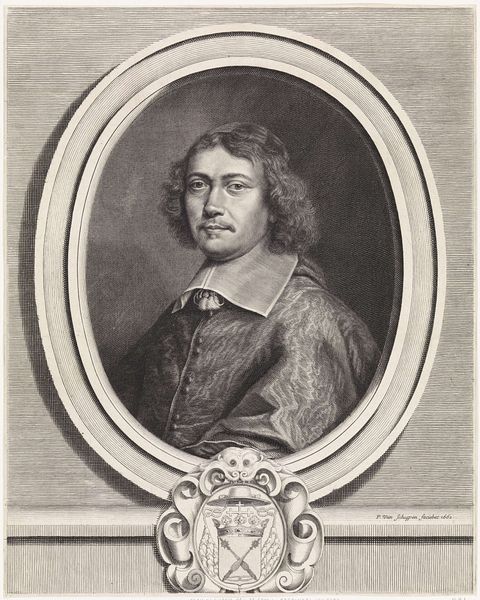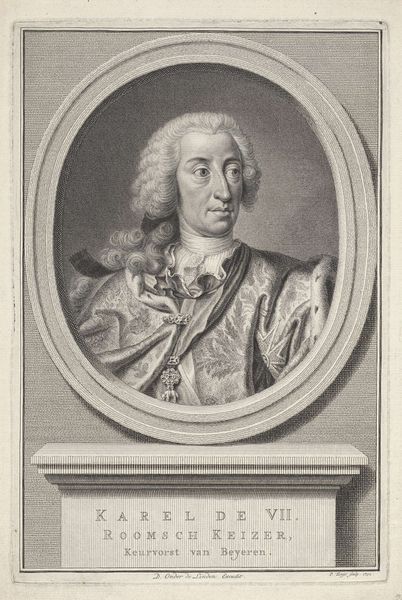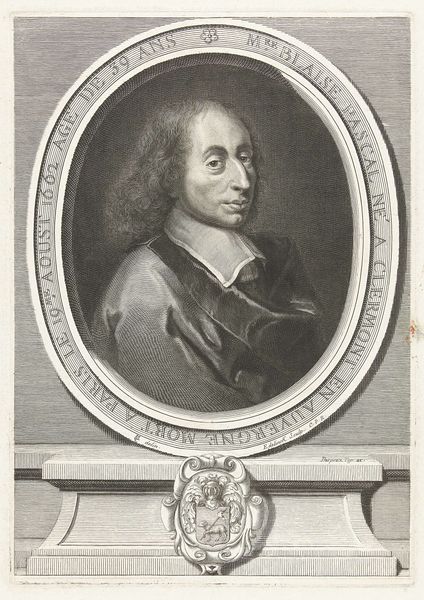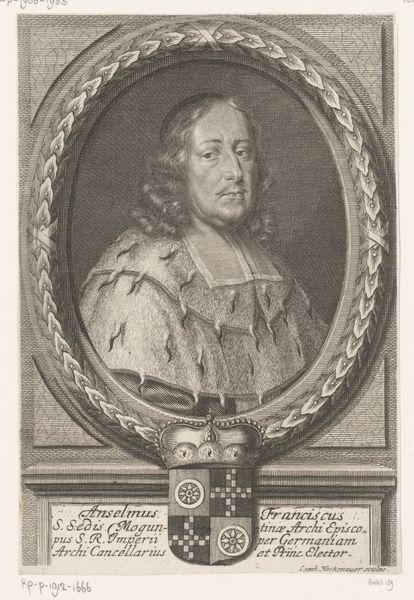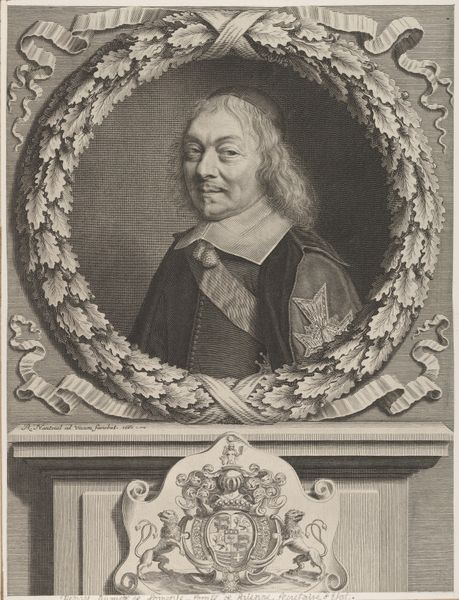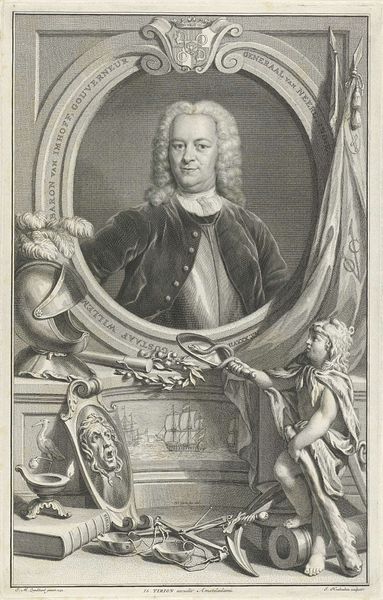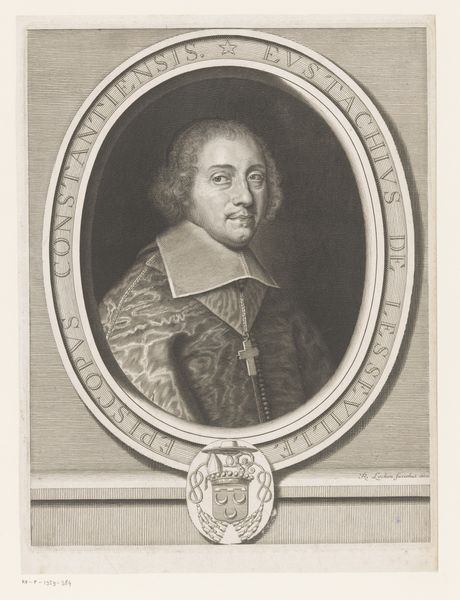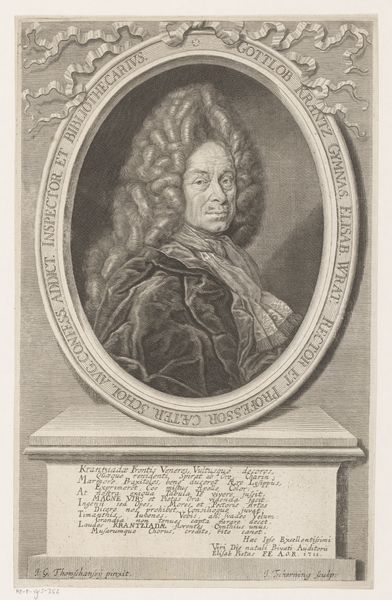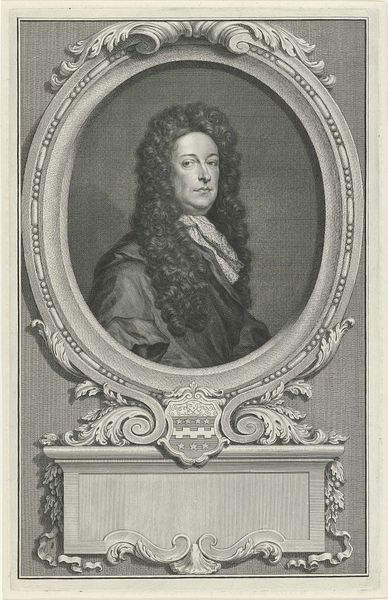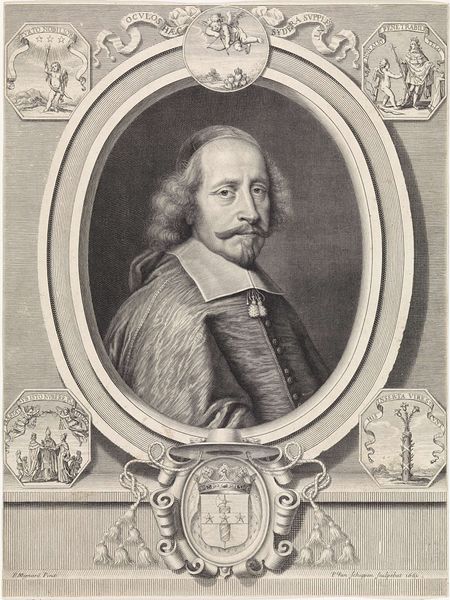
print, engraving
#
portrait
#
baroque
# print
#
old engraving style
#
old-timey
#
limited contrast and shading
#
engraving
Dimensions: height 375 mm, width 273 mm, height 345 mm, width 273 mm, height 32 mm, width 273 mm
Copyright: Rijks Museum: Open Domain
Curator: Look at this rather imposing portrait, rendered with such delicate lines. This is "Portret van Charles-François d'Anglure de Bourlemont," an engraving created in 1665 by Pieter van Schuppen, currently residing at the Rijksmuseum. Editor: It evokes a somber mood for me. The limited contrast gives it a very specific, almost muted quality. There's a formality that is typical for a Baroque portrait but something about it also seems quietly subdued. Curator: Absolutely. Engravings such as this played a crucial role in disseminating imagery and solidifying the power of the portrayed. Here, we have Charles-François d'Anglure de Bourlemont, Archbishop of Toulouse. This print likely served as a means of circulating his image, reinforcing his authority. Editor: Power is definitely on display, although the textures—the hair, the robe—feel almost incidental. The gaze is important, almost staged. This type of idealized representation reinforces very specific societal roles for someone of high ecclesiastic status. Was it simply about perpetuating hierarchies? Curator: That's certainly part of it. It's about visibility, status, and legacy. But it also taps into the cultural norms around representation and the male gaze that positioned people within established patriarchal systems. This work must also be contextualized with discussions about the religious climate during the baroque period. Editor: So much conveyed in seemingly simple lines. Even the decorative elements—the ribbons, the cartouche—contribute to constructing that visual power, containing and framing him as an institution onto himself. Curator: Precisely, the details are carefully orchestrated. We must look at art in museums, like this engraving, with awareness to their implications, and ask questions on why particular forms of image making or people get remembered over others. Editor: Looking at this piece from a social-historical perspective reminds us that images have long had the potential to uphold legacies and also enforce restrictive views that, if we are not critical of their function, have continued impact in current conversations of diversity and equal representation.
Comments
No comments
Be the first to comment and join the conversation on the ultimate creative platform.
